DDX3 Represses Stemness by Epigenetically Modulating Tumor-suppressive miRNAs in Hepatocellular Carcinoma
- PMID: 27344963
- PMCID: PMC4921922
- DOI: 10.1038/srep28637
DDX3 Represses Stemness by Epigenetically Modulating Tumor-suppressive miRNAs in Hepatocellular Carcinoma
Abstract
Studies indicate that the presence of cancer stem cells (CSCs) is responsible for poor prognosis of hepatocellular carcinoma (HCC) patients. In this study, the functional role of DDX3 in regulation of hepatic CSCs was investigated. Our results demonstrated that reduced DDX3 expression was not only inversely associated with tumor grade, but also predicted poor prognosis of HCC patients. Knockdown of DDX3 in HCC cell line HepG2 induced stemness gene signature followed by occurrence of self-renewal, chemoreisistance, EMT, migration as well as CSC expansion, and most importantly, DDX3 knockdown promotes tumorigenesis. Moreover, we found positive correlations between DDX3 level and expressions of tumor-suppressive miR-200b, miR-200c, miR-122 and miR-145, but not miR-10b and miR-519a, implying their involvement in DDX3 knockdown-induced CSC phenotypes. In addition, DDX3 reduction promoted up-regulation of DNA methyltransferase 3A (DNMT3A), while neither DNMT3B nor DNMT1 expression was affected. Enriched DNMT3A binding along with hypermethylation on promoters of these tumor-suppressive miRNAs reflected their transcriptional repressions in DDX3-knockdown cells. Furthermore, individual restoration of these tumor-suppressive miRNAs represses DDX3 knockdown-induced CSC phenotypes. In conclusion, our study suggested that DDX3 prevents generation of CSCs through epigenetically regulating a subset of tumor-suppressive miRNAs expressions, which strengthens tumor suppressor role of DDX3 in HCC.
Figures
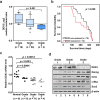
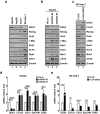
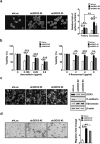
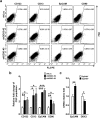
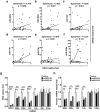
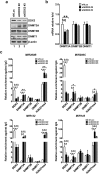
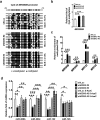


Similar articles
-
microRNA-448 inhibits stemness maintenance and self-renewal of hepatocellular carcinoma stem cells through the MAGEA6-mediated AMPK signaling pathway.J Cell Physiol. 2019 Dec;234(12):23461-23474. doi: 10.1002/jcp.28915. Epub 2019 Jun 24. J Cell Physiol. 2019. PMID: 31232474
-
DDX3, a DEAD box RNA helicase, is deregulated in hepatitis virus-associated hepatocellular carcinoma and is involved in cell growth control.Oncogene. 2006 Mar 30;25(14):1991-2003. doi: 10.1038/sj.onc.1209239. Oncogene. 2006. PMID: 16301996
-
RNA Polymerase II-Associated Factor 1 Regulates Stem Cell Features of Pancreatic Cancer Cells, Independently of the PAF1 Complex, via Interactions With PHF5A and DDX3.Gastroenterology. 2020 Nov;159(5):1898-1915.e6. doi: 10.1053/j.gastro.2020.07.053. Epub 2020 Aug 8. Gastroenterology. 2020. PMID: 32781084 Free PMC article.
-
DDX3X Multifunctionally Modulates Tumor Progression and Serves as a Prognostic Indicator to Predict Cancer Outcomes.Int J Mol Sci. 2019 Dec 31;21(1):281. doi: 10.3390/ijms21010281. Int J Mol Sci. 2019. PMID: 31906196 Free PMC article. Review.
-
Stem cells in hepatocarcinogenesis: evidence from genomic data.Semin Liver Dis. 2010 Feb;30(1):26-34. doi: 10.1055/s-0030-1247130. Epub 2010 Feb 19. Semin Liver Dis. 2010. PMID: 20175031 Free PMC article. Review.
Cited by
-
DEAD-Box RNA Helicases DDX3X and DDX5 as Oncogenes or Oncosuppressors: A Network Perspective.Cancers (Basel). 2022 Aug 6;14(15):3820. doi: 10.3390/cancers14153820. Cancers (Basel). 2022. PMID: 35954483 Free PMC article. Review.
-
The DEAD-box protein family of RNA helicases: sentinels for a myriad of cellular functions with emerging roles in tumorigenesis.Int J Clin Oncol. 2021 May;26(5):795-825. doi: 10.1007/s10147-021-01892-1. Epub 2021 Mar 3. Int J Clin Oncol. 2021. PMID: 33656655 Review.
-
MicroRNA regulation of liver cancer stem cells.Am J Cancer Res. 2018 Jul 1;8(7):1126-1141. eCollection 2018. Am J Cancer Res. 2018. PMID: 30094089 Free PMC article. Review.
-
Long noncoding RNA MEG3 suppresses liver cancer cells growth through inhibiting β-catenin by activating PKM2 and inactivating PTEN.Cell Death Dis. 2018 Feb 15;9(3):253. doi: 10.1038/s41419-018-0305-7. Cell Death Dis. 2018. PMID: 29449541 Free PMC article.
-
RNA helicase DDX3 maintains lipid homeostasis through upregulation of the microsomal triglyceride transfer protein by interacting with HNF4 and SHP.Sci Rep. 2017 Jan 27;7:41452. doi: 10.1038/srep41452. Sci Rep. 2017. PMID: 28128295 Free PMC article.
References
-
- Visvader J. E. & Lindeman G. J. Cancer stem cells in solid tumours: accumulating evidence and unresolved questions. Nat. Rev. Cancer 8, 755–768 (2008). - PubMed
Publication types
MeSH terms
Substances
LinkOut - more resources
Full Text Sources
Other Literature Sources
Medical
Research Materials

